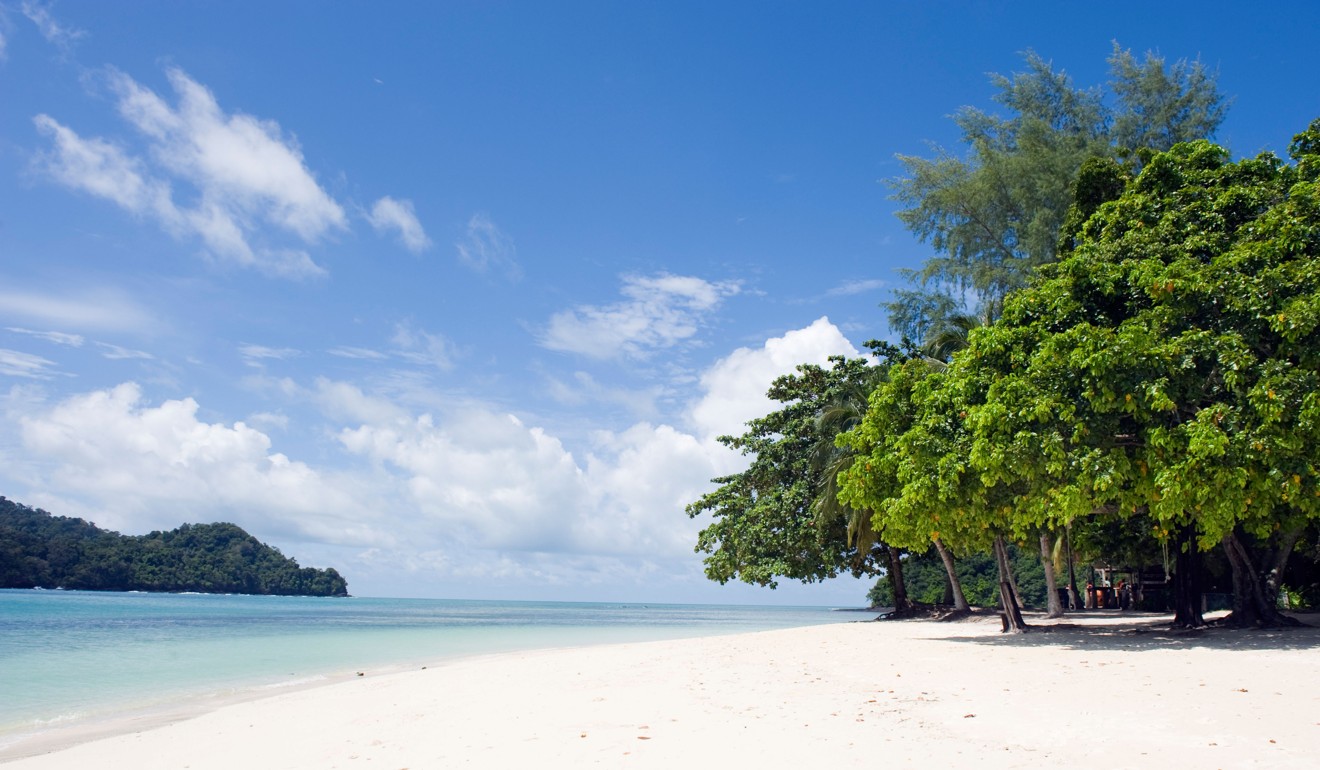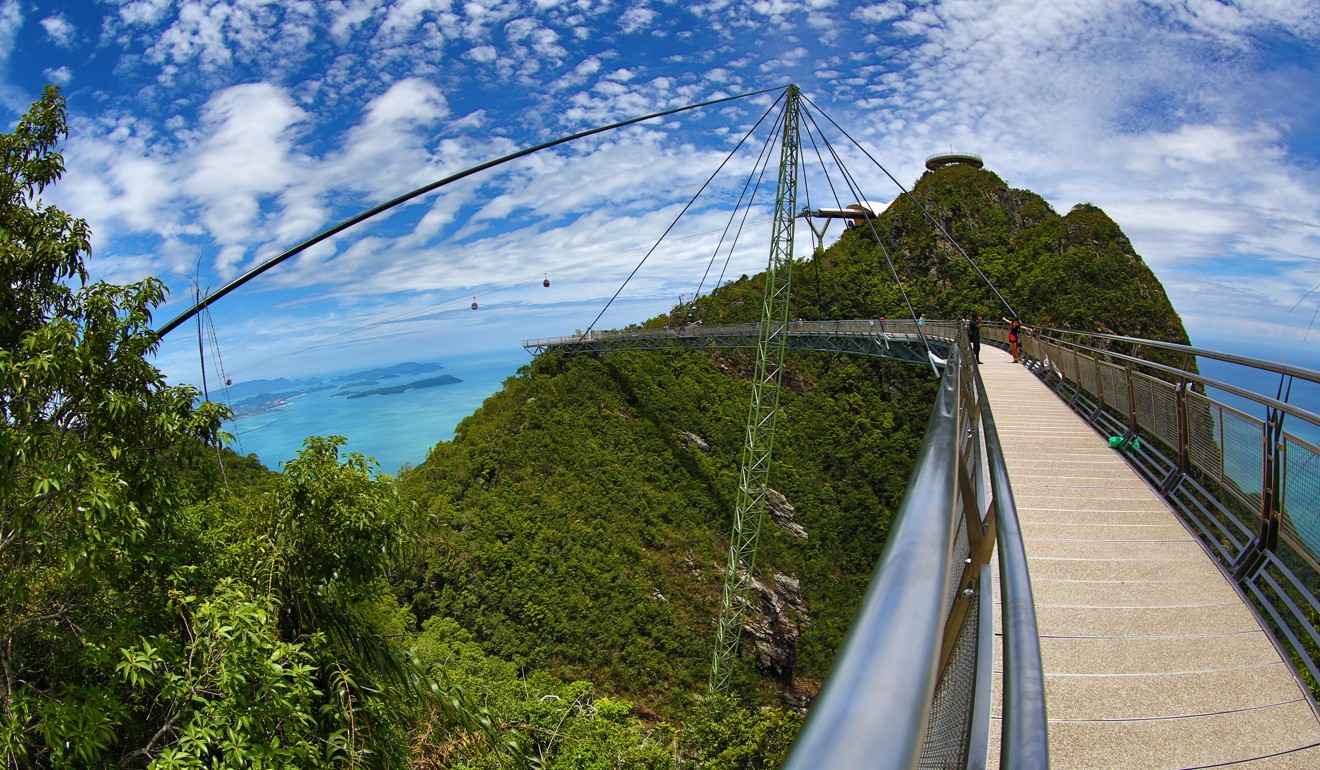
Langkawi at a crossroads: can ecosystem that draws tourists survive rising visitor numbers?
- Tourism is a double-edged sword for the ecologically rich Unesco geopark in Malaysia as far as conservationists are concerned
- Authorities and the archipelago’s tourism industry are working together to reduce the impact of visitors, whose numbers could top 4 million next year
Langkawi’s fragile ecosystem and natural heritage helped earn it Unesco geopark status. But as tourist arrivals in the Malaysian archipelago rise, it is increasingly crucial that tourism does not take a toll on the beauty visitors come to see.
“Tourism is a double-edged sword,” Irshad Mobarak says. “I’m an optimist, but I feel that we are at a very important crossroads between protecting Langkawi’s natural heritage and exploiting it.”
Japanese tourists in Taiwan on the colonial history trail in Taipei, Tainan and Hualien
The Malaysian conservationist has been committed to preserving the islands for more than 30 years, when he visited to help several hotels set up operations. Then, fishing and agriculture were the main industries, but hopes were being pinned on driving the islands’ economy and transforming them into a tourist paradise.
“About 3½ years in, we realised Langkawi wasn’t just about beaches and duty free; there’s a lot to offer naturalists and nature lovers,” says Mobarak, president of Malaysia Ecotourism and Conservation Society.

In 2007, Langkawi was awarded Unesco geopark status, a prestigious title given to places of geological importance and currently bestowed on only 127 places around the world, including Hong Kong. During a 2011 assessment, the islands came close to losing their status when inspectors issued a yellow card, warning that authorities were failing to protect them properly.
Plans were drawn up to deliver more educational programmes in communities, employ additional park rangers and encourage more sustainable tours. By November 2018, the number of foreign tourists landing by air to explore the islands had risen 31 per cent compared with the previous year, while those arriving by sea had increased by 11.3 per cent. With the Langkawi Development Authority (Lada) predicting four million visitors by 2020, conserving the island landscapes is more important than ever.
“The pubic and private sector, residents and visitors – we all have a role to play,” says environmental advocate Anthony Wong, managing director of Frangipani Langkawi Resort and Spa – one of the archipelago’s sustainable hotels.
Independent travel: the best would-be nations to visit on holiday
The popular Kilim Geoforest Park, which spans nearly 100 square kilometres (38 square miles), encompasses mangrove swamps, powder white beaches, caves and limestone karsts five million year olds that jut out dramatically into the ocean.
Boats are a common way to explore the park; they weave along narrow tidal channels that cut through thick mangrove forests. Mobarak says many tours remain unregulated and speeding boats are causing riverbank erosion, which is having a detrimental effect on the intricate ecosystem.

Another common practice, also included in some island-hopping trips, is hurling chicken skin and innards overboard to feed the sea eagles Langkawi is named after. Clusters of boats bob in the water as the red-brown eagles – also known as Brahminy kites – swoop from the sky to fish the scraps from the water.
“This is a very unsustainable and bad practice,” says Morabak. He says tourists should also avoid feeding the hordes of monkeys that populate many of the islands.
Wong, who also co-founded Asian Overland Services in 1976, which includes eco-tours in its operations, recommends using a sustainable tour operator that promotes best practices. For example, Dev’s Adventure Tours recently launched a four-hour sea safari trip led by a naturalist with expert knowledge of the surrounding nature, rock formations and indigenous flora and fauna.
In September, Lada and Langkawi Research Centre launched a new geopark trail in the north of the main island. Dr Ibrahim Komoo, managing director of GeoSight, which spent more than a year laying the trail, said the aim is to ease the tourist toll on Kilim.

The three-hour BioGeoTrail Kubang Badak takes in a lazy boat trip through lush mangroves, an ancient bat cave and a jungle trek. It follows the footsteps of Thai settlers who relocated to Langkawi about 200 years ago. Komoo says. “The trail is truly special, as it includes geographical, biological and cultural elements that are unique to Langkawi, while lessening congestion at Kilim.”
Wildlife is abundant on the islands, and Morabak says an after-dark rainforest tour is a special way to experience it. JungleWalla Natural History Tours is one eco-operator that takes guests on a three-hour educational evening jaunt into the jungle.
Led by a nature guide, guests watch the sun melt into the horizon from Langkawi’s highest peak, Gunung Raya, before discovering the wealth of nocturnal wildlife. Monkeys chatter in the treetops amid the song of great hornbills, rollers, flowerpeckers and sunbirds, while flying squirrels and, if trekkers are lucky, flying lemurs glide through the canopy.

Another way to appreciate the verdant vistas is a 25-minute trip to Machinchang Mountain’s 709-metre peak via the world’s steepest cableway, Sky Cab. The cable cars pass over virgin rainforest and thundering waterfalls. On a clear day, you can see Thailand’s southern islands.
Take an easy hike around Sha Lo Tung, rural Hong Kong gem that was saved from developers
A short trek, which is steep and rugged in parts, takes visitors to the Sky Bridge. Curved and 125 metres long, it hangs 100 metres above the ground, suspended from an 82-metre pylon. While the experience is not for acrophobics (those with a fear of heights), the sweeping views it offers are worth it.
There are “sky trails” of varying levels that explore the mountain’s flora and fauna, with licenced nature guides on hand to share their knowledge of Langkawi’s natural beauty.
“For a little island, we have a lot,” Morabak says. “And there are many ways to enjoy Langkawi responsibly so it can be preserved for future visitors.”
Getting there
AirAsia, Malindo Air and Malaysia Airlines fly from Kuala Lumpur to Langkawi in just over an hour.

